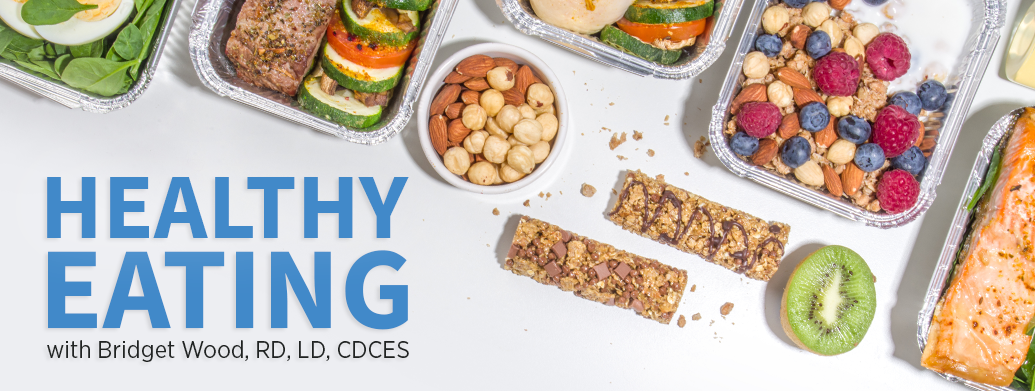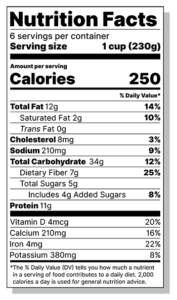
 It’s hard to believe that August has already come and gone, and we’re already into the fall season! Where does the time go?
It’s hard to believe that August has already come and gone, and we’re already into the fall season! Where does the time go?
September is one of my favorite months for multiple reasons, but did you know that September is Food Literacy Month in California (the global headquarters of Glooko!), Washington and Canada. I thought this post would be the perfect opportunity to discuss how to navigate nutrition when you’re attempting to plan your meals for the day or the week!
You’re probably wondering…what does food literacy even mean? Never fear, your neighborhood registered dietitian is here to help!
Food literacy is defined by the Food Literacy Center as: “understanding the impact of your food choices on your health, the environment, and our economy.”
Our food system is linked to things such as climate change, lack of food access, issues with food safety concerns and certain health issues among other concerns. While I won’t discuss all of these today, I wanted to equip you with the best tools, so you know what to look out for when you’re eating deliciously and nutritiously!
READING NUTRITION FACTS LABELS
 There is so much information on a Nutrition Facts Label that it can be overwhelming!
There is so much information on a Nutrition Facts Label that it can be overwhelming!
While all of the information can be useful in planning meals, the easiest place to start when trying to interpret labels is the Daily Value (DV) column. 20% or higher of an item means that it is high in that item, and 5% or less of an item means that it is low in that item.
For example, you would want to aim for items that are 20% or higher in fiber, vitamin D, calcium and potassium, and you would want to aim for items that are 5% or less in saturated fats, sodium, and added sugars as they are more likely to cause health issues when consumed in excess. Although there are many items mentioned above, I believe in starting off slowly when you are changing habits as it will help you to stick with the changes versus trying and going back to old behaviors!
Let’s start off with sodium, sugars and fiber—once you feel like you’ve mastered that, feel free to include the others as well!
Sodium
Sodium is often used interchangeably with salt and helps to flavor our foods. It can also act as a preservative and binder in certain recipes.
Sodium is needed by the body to perform certain bodily functions, such as helping our muscles contract, helping our nerves carry messages through our body to our brains, balancing our bodies fluid levels and regulating our blood pressure. The unfortunate reality is that we only need a tiny amount to do these and the typical diet we often get too MUCH. High sodium intake over time can lead to high blood pressure, which can then result in heart attack and/or stroke. High blood pressure can increase your risk of developing type 2 diabetes and uncontrolled diabetes over a long period of time can increase your risk of high blood pressure and other complications.
![]() The 2020–2025 Dietary Guidelines for Americans recommend that most Americans (your levels may vary and be less depending on your own health conditions, check with your Registered Dietitian and Doctor to determine the appropriate level for you) intake be less than 2,300 mg of sodium each day in order to lower risks for developing high blood pressure. This may seem like a lot, but that equates to approximately 1 teaspoon! It is said that approximately 90% of Americans 2 years old or older consume too much sodium and that average sodium intake is MORE than 3,400 mg a day for Americans.
The 2020–2025 Dietary Guidelines for Americans recommend that most Americans (your levels may vary and be less depending on your own health conditions, check with your Registered Dietitian and Doctor to determine the appropriate level for you) intake be less than 2,300 mg of sodium each day in order to lower risks for developing high blood pressure. This may seem like a lot, but that equates to approximately 1 teaspoon! It is said that approximately 90% of Americans 2 years old or older consume too much sodium and that average sodium intake is MORE than 3,400 mg a day for Americans.
While things like preparing meals at home, monitoring portion sizes of processed foods and flavoring foods with other ingredients, including spices, onions and garlic, can all work together to reduce your sodium intake, you can also read Nutrition Facts Labels (or use the food tracker in the Glooko mobile app) to help lower your sodium consumption.
Sugars
Sugars get a bad rap, but it isn’t all bad. Glucose, a form of sugar, is one of our body’s main fuel sources and gives us energy to do our day-to-day activities. However, just like with sodium, too much sugar over time can put you at risk for chronic diseases, like heart disease, fatty liver disease and insulin resistance that can increase your risk for type 2 diabetes. Being mindful about your sugar intake can be important for people living with diabetes as it can help to reduce the risks of these diseases but also can help to reduce spiking of your blood sugar levels.
It is recommended that we consume no more than 200 calories from added sugars daily, which is equal to roughly 12 teaspoons. Added sugars—not to be confused with natural sugars—can be found in things like sugar-sweetened beverages and sweets, like desserts, pastries, sugary snacks and candies. Other foods containing sugars, like fruit, are encouraged as they are more nutrient dense and provide additional benefits such as vitamins and fiber. You can use these to sweeten your foods naturally, while others may choose to use sugar substitutes to help with managing your blood sugar levels. Whichever you choose, you are lowering your added sugar consumption along the way!
 Aim to include fruit in meals or snacks to get the benefits mentioned above. You can even go one step further and reduce your food waste by using your food scraps in recipes and compost for your garden!
Aim to include fruit in meals or snacks to get the benefits mentioned above. You can even go one step further and reduce your food waste by using your food scraps in recipes and compost for your garden!
Try out this delicious baked sweet ricotta recipe that is low in added sugars!
These individual baked ricottas are a low carb and quick cheesecake-like snack or dessert that you can make in minutes! They have no added sugar and are packed with protein to help keep you satiated and stabilize your blood sugars all while satisfying your sweet tooth.
Download a recipe for Baked Sweet Ricotta (PDF)
Fiber
Fiber, another form of carbohydrate or sugar can actually be beneficial to your health and is an item that you are encouraged to eat more of!
Fiber can help keep you regular, aid with stabilizing blood sugar levels, is a helpful tool in weight management and can help to keep you fueled for longer than without. It is found in natural sugar sources such as fruits, but is also found in things such as vegetables, whole grains, seeds, nuts and legumes. If you are unable to consume enough fiber through food first, feel free to add a supplement to your daily routine. You can even try tricks like adding ground psyllium husks to your typical baked treats to give it a little extra fiber boost! The addition of the fiber is beneficial for those of us living with diabetes (and for those of us who aren’t!) as it will slow down the digestion of your food and help with keeping your blood sugar levels more stable!
All of that to say—it’s not all or nothing. It’s not necessarily about eliminating the foods that you want to aim for less of, but about adjusting them to fit and pairing them with more nutrient dense choices.
If you are consuming something that has 52% DV of sodium, try and be mindful of the portion that you’re consuming, or simply adjust what you’re consuming later in the day, so that you don’t feel like you are restricting or missing out. All food can fit in your diet. It’s truly about the bigger picture and adding in those nutrient dense foods with fiber and vitamins. You can even make it a challenge to eat MORE of those foods.
 You can track your intake easily with the voice capture feature in the Glooko mobile app to truly get an idea of how much you really are consuming of those items.
You can track your intake easily with the voice capture feature in the Glooko mobile app to truly get an idea of how much you really are consuming of those items.
So there you have it, some homework to take with you on your next trip to the grocery store! Try to increase your intake of foods rich in fiber, vitamin D, protein, and calcium that you want to aim high for and decrease the portions you consume of things full of sodium, salt, and saturated fats that you want to aim for less of.
Don’t forget to tag @Glooko or myself (@BalancedWithBridgetWood) on Instagram, and use the hashtags, #BetterTogether and #BalancedWithBridgetWood, in all of your creations!
Your Friend in Food,
Bridget Wood, RD, LD, CDCES
MKT-0397
